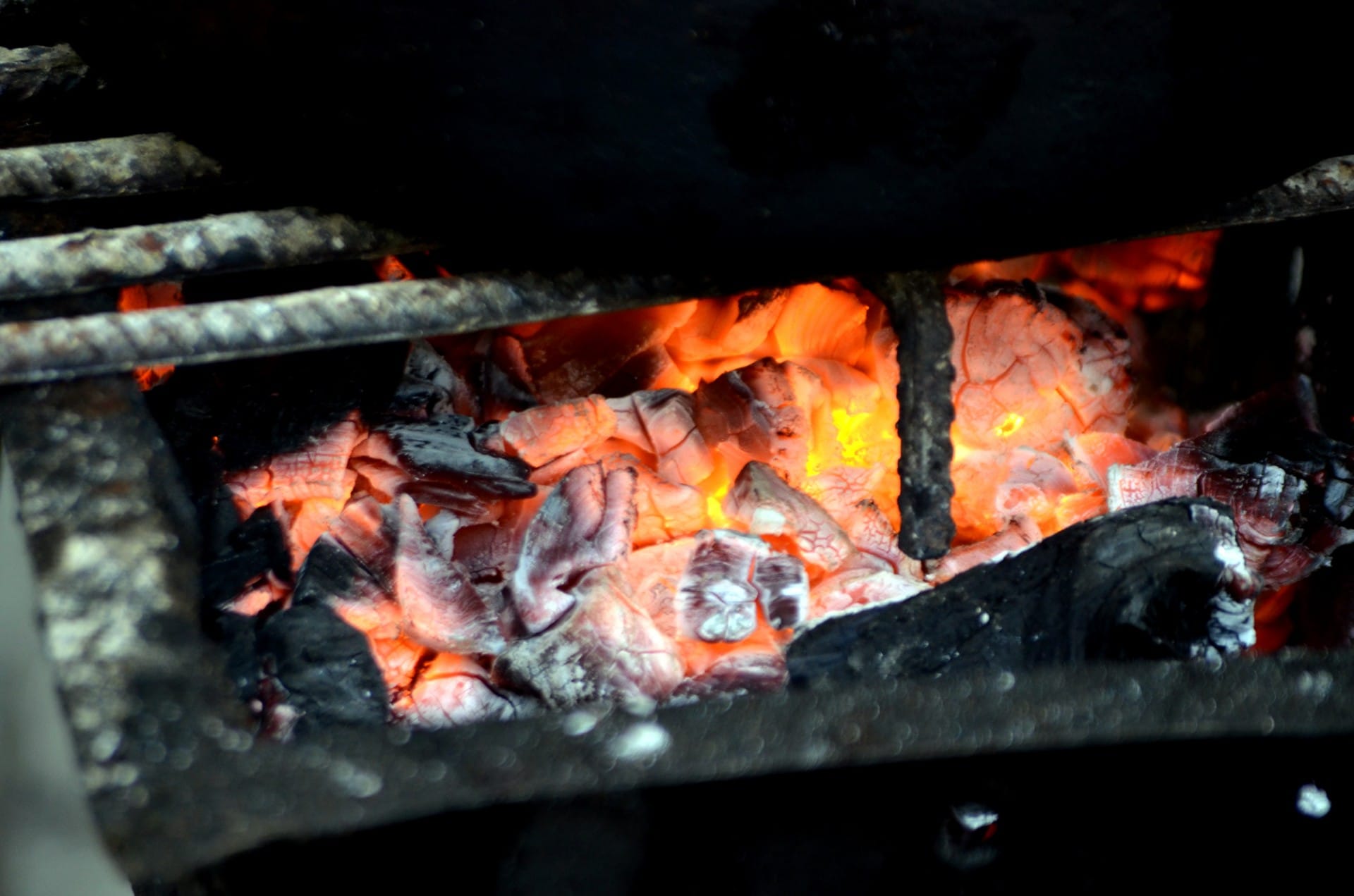The Science Behind the Blaze: More Than Meets the Eye
Most of us understand the destructive force of wildfires, especially after witnessing events like the 2020 Australian bushfires or the ongoing California wildfires. But have you ever stopped to consider the science behind these infernos? Understanding fire science can provide valuable insights into how fires ignite, spread, and can be extinguished. Let’s delve into the fascinating world of fire dynamics.
While the term “wahya fire” doesn’t appear to have a specific meaning within the context of fire science, it highlights the growing concern and awareness surrounding fires. This article aims to provide a comprehensive overview of fire, encompassing its various aspects, from its scientific underpinnings to its devastating impacts and essential safety measures.
Different Types of Fires: From Helpful to Hazardous
Believe it or not, not all fires are created equal. Some are actually beneficial, while others pose significant threats. Understanding these differences is crucial for effective wildfire management and prevention.
- Surface Fires: These fires burn through the top layer of vegetation, like dry leaves and grass. While they might seem destructive, they can actually benefit forests by clearing out debris and making way for new growth.
- Crown Fires: Unlike surface fires, crown fires climb up into the treetops, spreading rapidly and intensely. These fires are particularly dangerous, often fueled by strong winds and dry conditions.
- Ground Fires: As the name suggests, ground fires burn beneath the surface, consuming organic matter like peat and roots. These fires can smolder for extended periods, making them challenging to extinguish.
Fuel plays a crucial role in any fire, acting as the substance that burns. In the case of wildfires, dry vegetation, fallen trees, and even buildings can serve as fuel. The more fuel available, the larger and hotter the fire can become. This emphasizes the importance of managing forests and reducing fuel loads to minimize wildfire risks.
Rampant Blazes: Highlighting the Increasing Threat of Fire
The threat of fire isn’t limited to remote forests anymore. We’re seeing wildfires erupt in unexpected places, from highway medians to residential neighborhoods. This suggests a concerning trend: fires are becoming more common and impacting areas closer to human populations. Experts believe that climate change is a major driver, as rising temperatures create drier conditions, making it easier for fires to ignite and spread.
Adding to the complexity, human actions, both intentional and accidental, often spark these blazes. A carelessly discarded cigarette, a spark from machinery, or even arson can have devastating consequences.
The global impact of these fires is undeniable, with diverse ecosystems, from dense forests to bustling urban areas, experiencing their destructive power. This results in significant habitat loss, property damage, and tragic loss of life. It’s a stark reminder that fire poses a threat to both our environment and our way of life.
Understanding the Devastating Aftermath in Hawaii: A Call for Wildfire Preparedness
The recent wildfires in Maui, Hawaii, serve as a tragic reminder of fire’s destructive potential. The speed and intensity of the blaze, fueled by dry conditions and strong winds, left a path of devastation across the island. Lahaina, a historic town, was particularly hard hit, with homes, businesses, and cultural landmarks reduced to ash. The human cost was immeasurable, with the death toll exceeding 100, making it the deadliest U.S. wildfire in recent history.
The Maui wildfires also exposed vulnerabilities in emergency response systems. The failure of the siren warning system and communication breakdowns left residents without critical information, highlighting the need for improved emergency preparedness and community education.
The tragedy emphasizes several key takeaways:
- The Growing Threat of Wildfires: With climate change exacerbating fire conditions, the risk of wildfires is increasing globally.
- The Importance of Emergency Preparedness: Robust emergency response plans, including evacuation routes, communication protocols, and community education, are essential.
- Addressing Systemic Failures: It’s crucial to learn from past events, identify weaknesses in emergency response systems, and implement necessary improvements.
- Investing in Resilience: Proactive measures, such as early warning systems, improved infrastructure, and wildfire prevention strategies, are vital for reducing future risks.
Climate Change and Fire- Unpacking the Complex Relationship and Its Implications
Climate change acts as a catalyst for increased wildfire activity, creating a dangerous feedback loop. Rising temperatures lead to drier vegetation, essentially turning forests into tinderboxes. Shifts in rainfall patterns, resulting in prolonged droughts, further exacerbate these conditions.
However, it’s important to recognize that while climate change might set the stage, human actions often light the match. Careless behaviors, such as improper disposal of cigarettes or unattended campfires, can ignite catastrophic wildfires. As human populations expand into wildland areas, the risk of human-caused ignitions increases.
The consequences of these raging infernos extend far beyond the charred landscapes they leave behind. Forests, which play a critical role in absorbing carbon dioxide, release massive amounts of this greenhouse gas back into the atmosphere, fueling the cycle of climate change. Wildfires also pollute our air and water, impacting human health and ecosystems.
The Far-Reaching Consequences of Fire- From Traffic Chaos to Loss of Heritage
The impacts of fire reach far beyond the immediate flames. Let’s explore some of the long-lasting consequences that fires can inflict on our communities:
Traffic Nightmares and Economic Headaches
Road closures, detours, and evacuations due to fires disrupt transportation networks, causing significant delays and economic losses. Businesses face disruptions, deliveries are delayed, and essential services are hindered, impacting communities and livelihoods.
Our Environment on the Line
Fires devastate ecosystems, destroying wildlife habitats, polluting air and water resources, and releasing harmful pollutants that can travel vast distances. The loss of forests, which act as carbon sinks, further contributes to climate change.
The Price Tag of Destruction
The economic cost of fires is staggering, encompassing property damage, business closures, lost productivity, and the strain on emergency response and recovery efforts.
Saying Goodbye to History
Fires can obliterate irreplaceable cultural heritage, destroying historic buildings, artifacts, and documents. These losses represent a profound blow to our collective memory and cultural identity.
The Human Cost: Scars That Run Deep
Beyond the physical destruction, fires leave lasting emotional scars on individuals and communities. The trauma of displacement, the loss of loved ones, and the stress of rebuilding can have profound psychological impacts.
Fire Safety and Prevention- Essential Measures for a Safer Future
Preventing fires from igniting in the first place is crucial for safeguarding lives, property, and the environment. By understanding the common causes of fires and implementing practical safety measures, we can significantly reduce the risk.
1. Be Smart About Electricity:
- Check Your Wiring: Outdated or damaged wiring poses a serious fire hazard. Regular inspections and upgrades can mitigate risks.
- Don’t Overload Outlets: Overloading electrical outlets can cause overheating and increase the risk of fires.
- Surge Protectors are Your Friends: Surge protectors safeguard electronic devices and prevent electrical surges that can spark fires.
2. Essential Safety Equipment:
- Smoke Alarms are Lifesavers: Smoke alarms provide early warnings, allowing time for evacuation. Ensure they are installed on every level of your home and tested regularly.
- Fire Extinguishers: Your First Line of Defense: Having a fire extinguisher readily available and knowing how to use it can help extinguish small fires before they escalate.
3. Everyday Habits That Make a Difference:
- Smoking Indoors is a Big No: Smoking indoors is a leading cause of house fires. If you smoke, do so outdoors and dispose of cigarettes responsibly.
- Store Flammable Liquids Safely: Flammable liquids, like gasoline, paint thinners, and aerosol cans, should be stored in well-ventilated areas away from heat sources.
- Keep Kids Safe: Educate children about fire safety, emphasizing that fire is not a toy. Keep lighters and matches out of reach.
4. Have a Plan and Practice It:
- Fire Escape Plan: Don’t Wait for an Emergency: Develop a fire escape plan that includes multiple exit routes from every room and a designated meeting place outside. Practice the plan regularly.
- Choose a Meeting Place: Establish a meeting point outside your home where everyone gathers after evacuating. This ensures everyone is accounted for.
5. Think About Fire Safety When Building or Renovating:
- Fire-Resistant Materials: Using fire-resistant materials, especially in kitchens and areas prone to fire hazards, can slow the spread of flames.
- Compartmentalization: Creating fire-resistant barriers within a building can help contain fires and limit their spread.
- Ventilation is Key: Proper ventilation helps prevent the buildup of heat and smoke, reducing the risk of rapid fire spread.
6. It Takes a Village: Community Preparedness
- Spread the Word: Engage with your community, share fire safety tips, and encourage preparedness efforts.
- Neighborhood Watch: Work together to identify and address potential fire hazards in your neighborhood.
- Evacuation Plan: Be aware of your community’s evacuation routes and procedures in case of a wildfire or large-scale emergency.
Conclusion
Fire is a powerful force that can be both beneficial and destructive. By understanding its science, recognizing the growing threat of wildfires, and implementing essential safety measures, we can work towards a safer and more resilient future. Remember, fire safety is a shared responsibility. By looking out for ourselves and each other, we can minimize risks and protect our communities.
- Unveiling Bernhard Caesar Einstein’s Scientific Achievements: A Legacy in Engineering - July 15, 2025
- Uncover who is Jerry McSorley: CEO, Family Man, Business Success Story - July 15, 2025
- Discover Bernhard Caesar Einstein’s Scientific Contributions: Unveiling a Legacy Beyond Einstein - July 15, 2025















